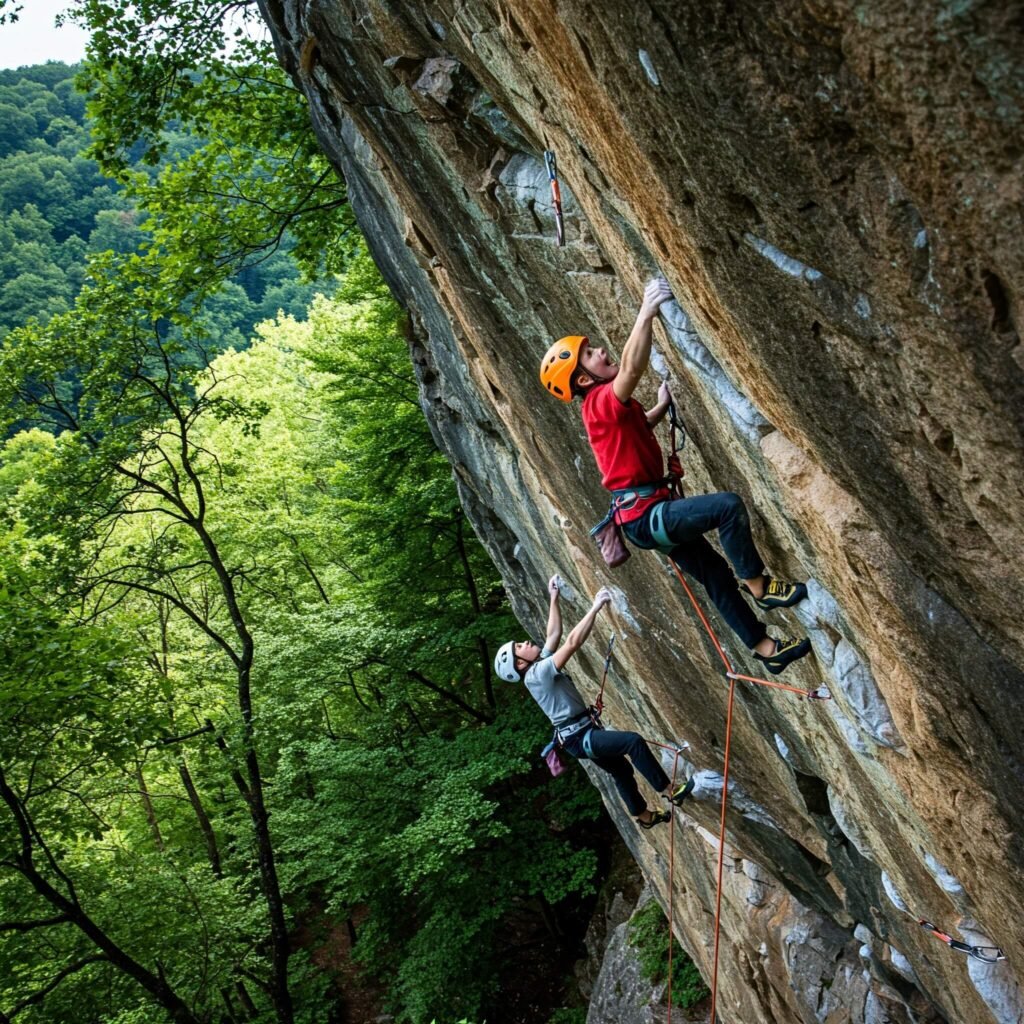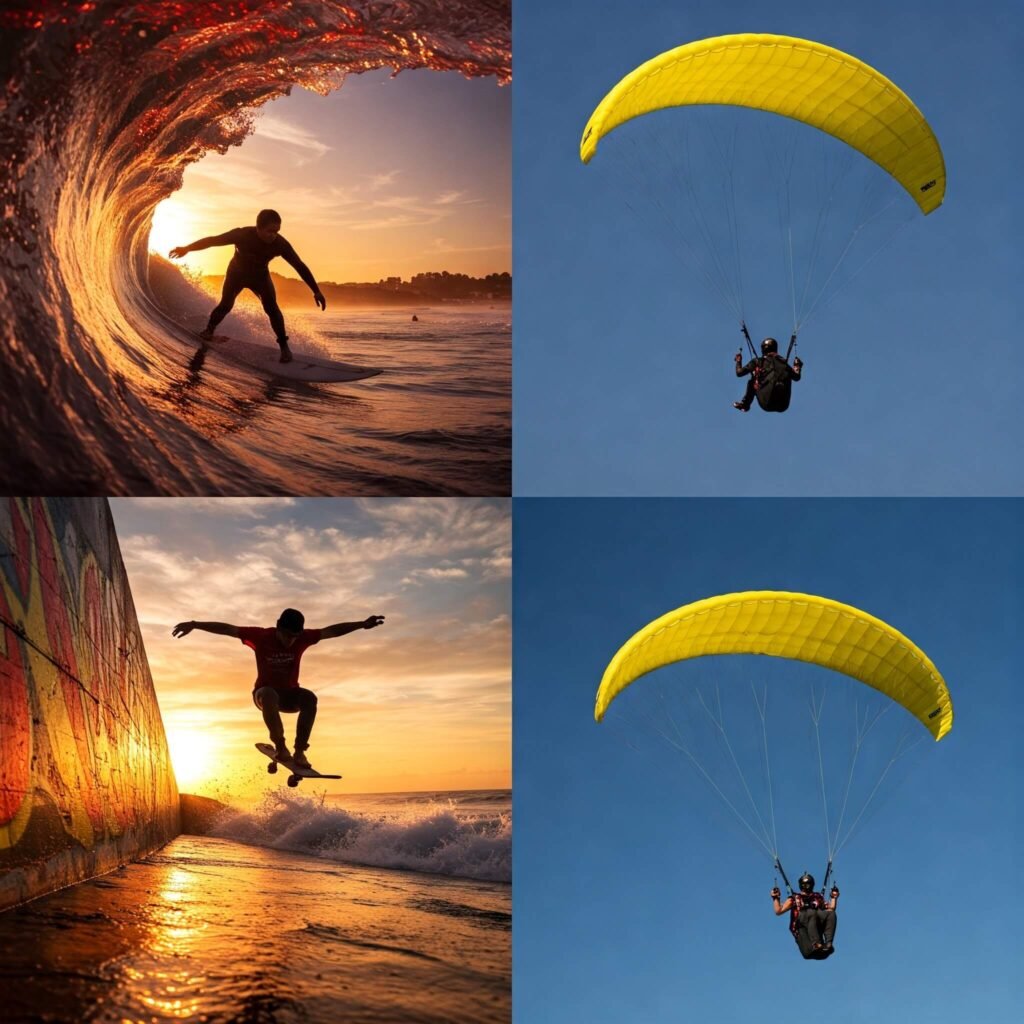Ready to dive into the adrenaline-pumping world of extreme sports? Whether it’s scaling cliffs, shredding waves, or soaring through the sky, getting started in extreme sports can transform your life with thrill and adventure. This beginner’s guide will walk you through the essentials, from choosing the right sport to staying safe while chasing the rush. Let’s unlock the excitement together!

Why Choose Extreme Sports?
Extreme sports aren’t just about the adrenaline—they’re about pushing your limits, building confidence, and connecting with nature. According to a 2023 study by the Outdoor Industry Association, participation in adventure sports grew by 15% globally, with beginners citing personal growth as a top motivator.
Getting started in extreme sports offers:
- Physical Fitness: Activities like skateboarding or mountain biking improve strength and endurance.
- Mental Resilience: Overcoming fears, like your first skydive, boosts confidence.
- Community: Join a global tribe of thrill-seekers who share your passion.
Ready to find your perfect extreme sport? Let’s explore how to begin.
Step 1: Choose the Right Extreme Sport for You
Not sure where to start? The key to getting started in extreme sports is picking an activity that matches your interests, fitness level, and access to resources. Here are some popular options for beginners:
- Rock Climbing: Great for building strength and problem-solving skills. Indoor gyms make it accessible.
- Surfing: Perfect for coastal dwellers who love the ocean. Start with a beginner-friendly board.
- Mountain Biking: Ideal for nature lovers with access to trails. Rent a bike to test the waters.
- Skateboarding: Urban-friendly and low-cost. Practice in skateparks for safety.
- Paragliding: For those craving aerial thrills. Tandem flights with instructors ease you in.
Pro Tip: Research local clubs or schools for your chosen sport. For example, the American Alpine Club offers beginner climbing workshops across the U.S.

How to Pick Your Sport
Consider these factors:
- Location: Live near mountains? Try climbing or skiing. Coastal? Surfing’s your jam.
- Budget: Skateboarding requires minimal gear, while paragliding needs specialized equipment.
- Fitness Level: Start with sports that match your current abilities to avoid injury.
- Passion: Choose something that excites you—your enthusiasm will keep you motivated.
Real-world example: Sarah, a 28-year-old office worker from California, discovered surfing through a local beginner’s camp. “It was intimidating at first, but catching my first wave was pure magic,” she says. Her story shows how the right sport can spark a lifelong passion.
Step 2: Gear Up for Success
Getting started in extreme sports requires the right equipment, but you don’t need to break the bank. Rent gear or buy second-hand until you’re committed. Here’s a quick guide:
- Rock Climbing: Helmet, harness, climbing shoes, and chalk bag. Expect to spend $100-$200 for basics.
- Surfing: A beginner-friendly foam board (around $300) and a wetsuit if you’re in colder waters.
- Skateboarding: A quality skateboard ($50-$150) and protective gear like a helmet and pads.
- Safety First: Always invest in high-quality safety gear. Check out REI’s safety guide for climbing tips.
Budget-Friendly Tips
- Rent First: Many sports, like mountain biking, offer rentals at local shops.
- Buy Used: Sites like GearTrade have affordable, gently used equipment.
- Join Groups: Local clubs often lend gear to new members.

Step 3: Learn the Basics with Pros
Extreme sports carry risks, so professional instruction is non-negotiable for beginners. Getting started in extreme sports safely means learning proper techniques from certified instructors. Options include:
- Group Classes: Affordable and social, like surfing camps or skateboarding clinics.
- Private Lessons: Ideal for personalized feedback, especially in sports like paragliding.
- Online Tutorials: Platforms like YouTube offer free beginner tips, but pair them with in-person coaching.
For example, Jake, a 22-year-old from Colorado, took a weekend mountain biking course. “The instructor taught me how to handle tricky descents safely,” he says. “It gave me the confidence to hit the trails solo.”
Where to Find Instruction
- Local Schools: Search for “extreme sports classes near me” to find certified programs.
- Adventure Organizations: Groups like Outward Bound offer beginner courses.
- Community Centers: Many offer low-cost skateboarding or climbing workshops.
Step 4: Prioritize Safety in Extreme Sports
Safety is critical when getting started in extreme sports. A 2022 report by the National Safety Council noted that proper training reduces injury rates by up to 40% in adventure sports. Follow these tips:
- Always Wear Safety Gear: Helmets, pads, and harnesses are non-negotiable.
- Know Your Limits: Don’t attempt advanced moves until you’re ready.
- Check Conditions: Avoid surfing in storms or climbing in wet weather.
- Train with a Buddy: A partner can spot dangers or call for help.
Building a Safety Mindset
- Take a first-aid course to handle minor injuries.
- Learn sport-specific safety protocols, like checking climbing ropes or bike brakes.
- Stay updated on weather and terrain conditions via apps like AccuWeather.
Step 5: Join the Extreme Sports Community
One of the best parts of getting started in extreme sports is the community. Connect with others to stay motivated and learn faster. Here’s how:
- Join Local Clubs: Search for groups like the Surfrider Foundation for surfing enthusiasts.
- Attend Events: Competitions and meetups are great for networking.
- Engage Online: Follow subreddits like r/climbing or r/skateboarding for tips and inspiration.
Real-world example: Mia, a beginner paraglider from Oregon, joined a local flying club. “The community was so welcoming,” she says. “They shared gear, tips, and even invited me to group flights.”
Your Next Steps in Extreme Sports
Getting started in extreme sports is about taking that first leap—whether it’s signing up for a class, renting gear, or joining a local crew. Start small, prioritize safety, and let your passion guide you. The thrill of conquering a new challenge awaits!
Actionable Takeaways:
- Research one extreme sport that excites you this week.
- Find a local class or club to join within the next month.
- Budget for basic gear and prioritize safety equipment.
- Connect with at least one fellow beginner to share the journey.
What’s your next adventure? Share your plans in the comments or tag us on social media!
Outbound Links:





































